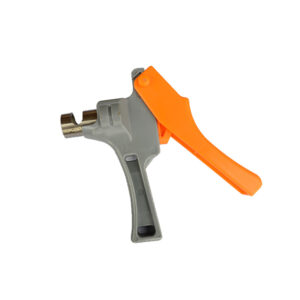While drip irrigation fittings are generally reliable, a few common problems can occur.
Here are some issues you may encounter with drip irrigation fittings:
Leakage: Leakage is a common problem that can occur at the connection points of fittings. It may result from improper installation, damaged or worn-out fittings, or insufficient tightening. Inspect the connections for any signs of water seepage and address the issue by reseating or replacing the fitting, ensuring proper alignment and tightness.
Clogging: Fittings, especially those with small openings like emitters or filters, can become clogged with debris, sediment, or mineral deposits. This can lead to reduced or uneven water flow. Regularly inspect and clean filters, emitters, and other fittings as per manufacturer recommendations to prevent clogging.
Poor Seal: If fittings are not properly seated or tightened, they may result in a poor seal, leading to water leakage or uneven water distribution. Ensure that fittings are inserted fully and tightened appropriately to create a secure seal. Use the recommended tools or techniques for tightening, avoiding over-tightening, which can damage the fitting.
Incompatibility: Incompatibility issues may arise when using fittings from different manufacturers or when trying to connect different types of drip tubing or tape. Mismatched sizes, thread types, or barb designs can cause leaks or improper connections. Always ensure that the fittings are compatible and designed for the specific tubing or tape you are using.
Breakage or Damage: Fittings can sometimes be subject to physical damage, such as cracking or breaking. This can occur due to excessive force, freezing temperatures, or wear and tear over time. Inspect fittings regularly and replace any damaged components to maintain the integrity of the system.
System Pressure Issues: Improperly sized or malfunctioning pressure regulators or valves can result in inconsistent water pressure throughout the drip irrigation system. This can affect the performance of fittings and emitters. Check and adjust pressure regulators as needed and ensure that valves are functioning correctly.
Fitting Wear and Aging: Over time, fittings may experience wear and aging, especially if exposed to harsh environmental conditions or sunlight. This can lead to degradation of materials, reduced sealing effectiveness, or breakage. Inspect fittings periodically and replace any worn-out or deteriorated components.
Regular maintenance, proper installation techniques, and using high-quality fittings can help minimize these common problems. drip irrigation fittings Follow manufacturer guidelines and recommendations for installation, maintenance, and replacement of fittings to ensure optimal performance of your drip irrigation system.
How often should I clean the filters and emitters to prevent clogging?
The frequency of cleaning filters and emitters to prevent clogging can vary depending on several factors, including water quality, the presence of debris or sediment in the water source, and the specific requirements of your drip irrigation system. However, a general guideline is to clean filters and emitters at least once or twice during the irrigation season or whenever you notice a decrease in water flow or uneven distribution. Here are some considerations:
Water Quality: If your water source tends to have high levels of sediment, minerals, or organic matter, you may need to clean filters and emitters more frequently. Water that is sourced from ponds, rivers, or wells with higher levels of impurities may require more frequent cleaning.
Pre-Filters: If you have pre-filters installed before the main filters, they can help remove larger particles and debris, reducing the frequency of cleaning the main filters and emitters. Regularly check and clean pre-filters as needed to maintain their effectiveness.
Visual Inspection: Regularly inspect the emitters and filters for any visible signs of clogging or reduced water flow. If you notice any blockages or uneven water distribution, it’s a good indication that cleaning is necessary.
Manufacturer Recommendations: Refer to the manufacturer’s instructions and recommendations for the specific filters and emitters you are using. They may provide specific guidelines on cleaning frequency and techniques based on their product’s design and specifications.
Seasonal Considerations: Cleaning frequency may vary during different seasons. For example, in areas where irrigation is not needed during the winter months, it’s a good practice to clean filters and emitters before shutting down the system for the season.
In general, it’s better to err on the side of caution and clean filters and emitters more frequently if you suspect any issues with clogging. Regular maintenance and cleaning will help ensure optimal performance and longevity of your drip irrigation system.

